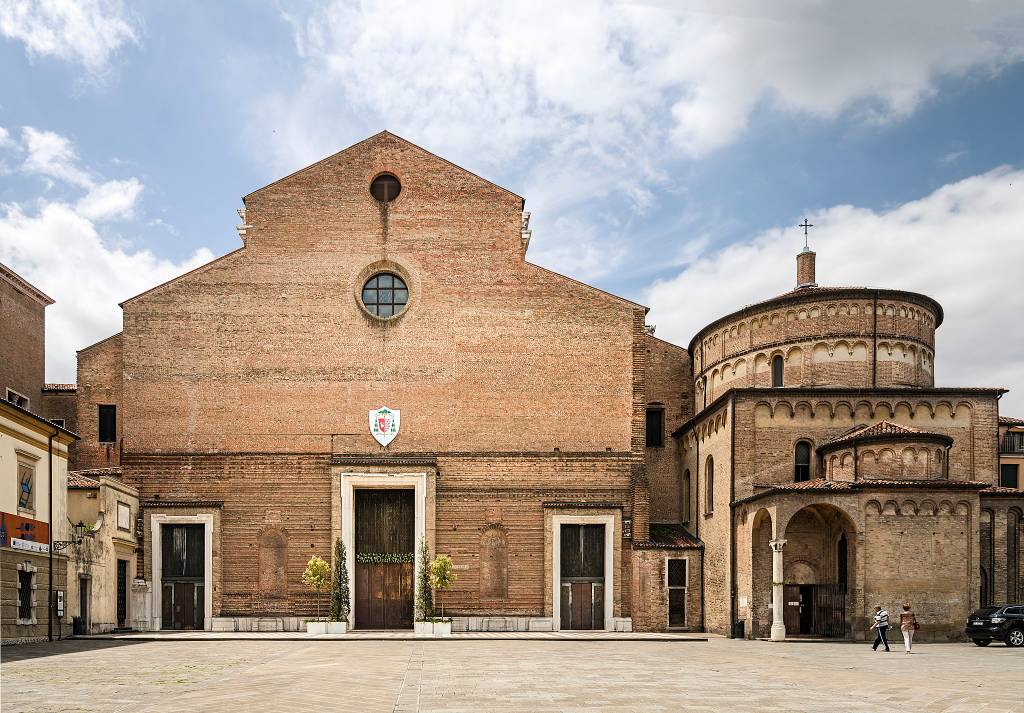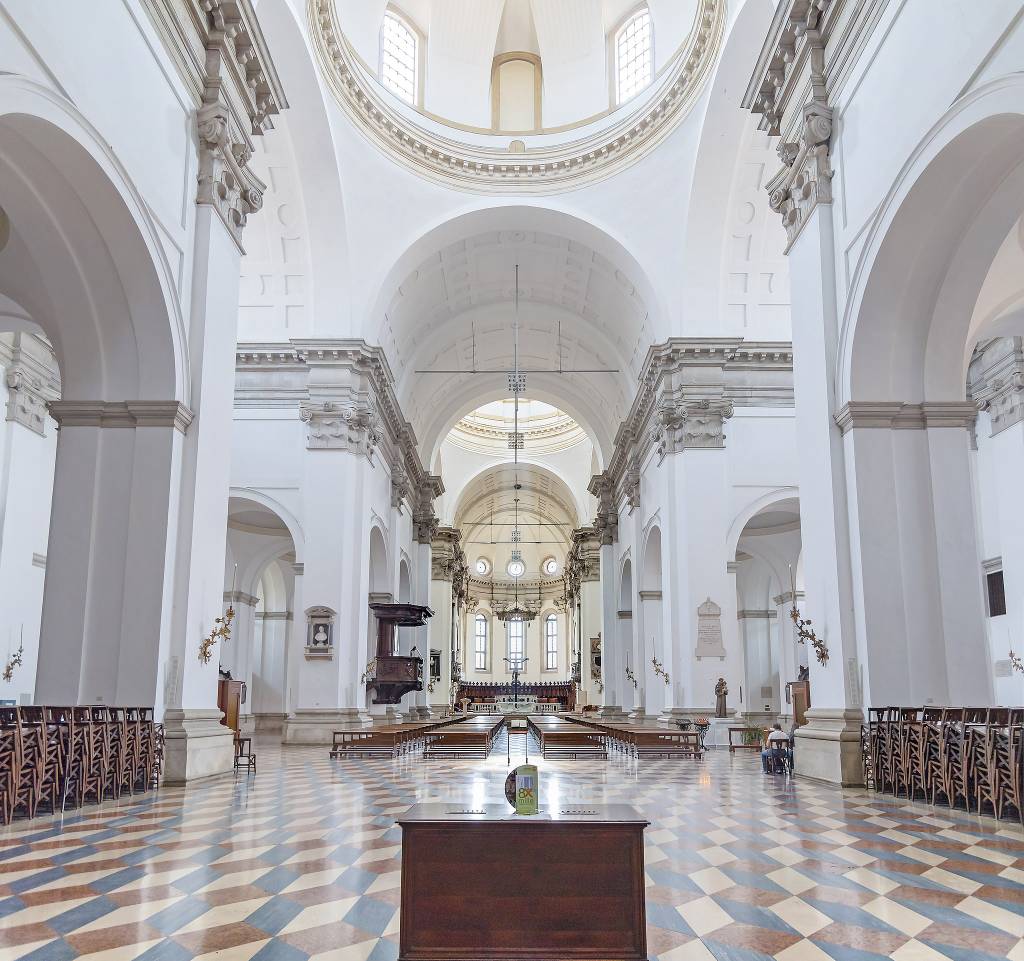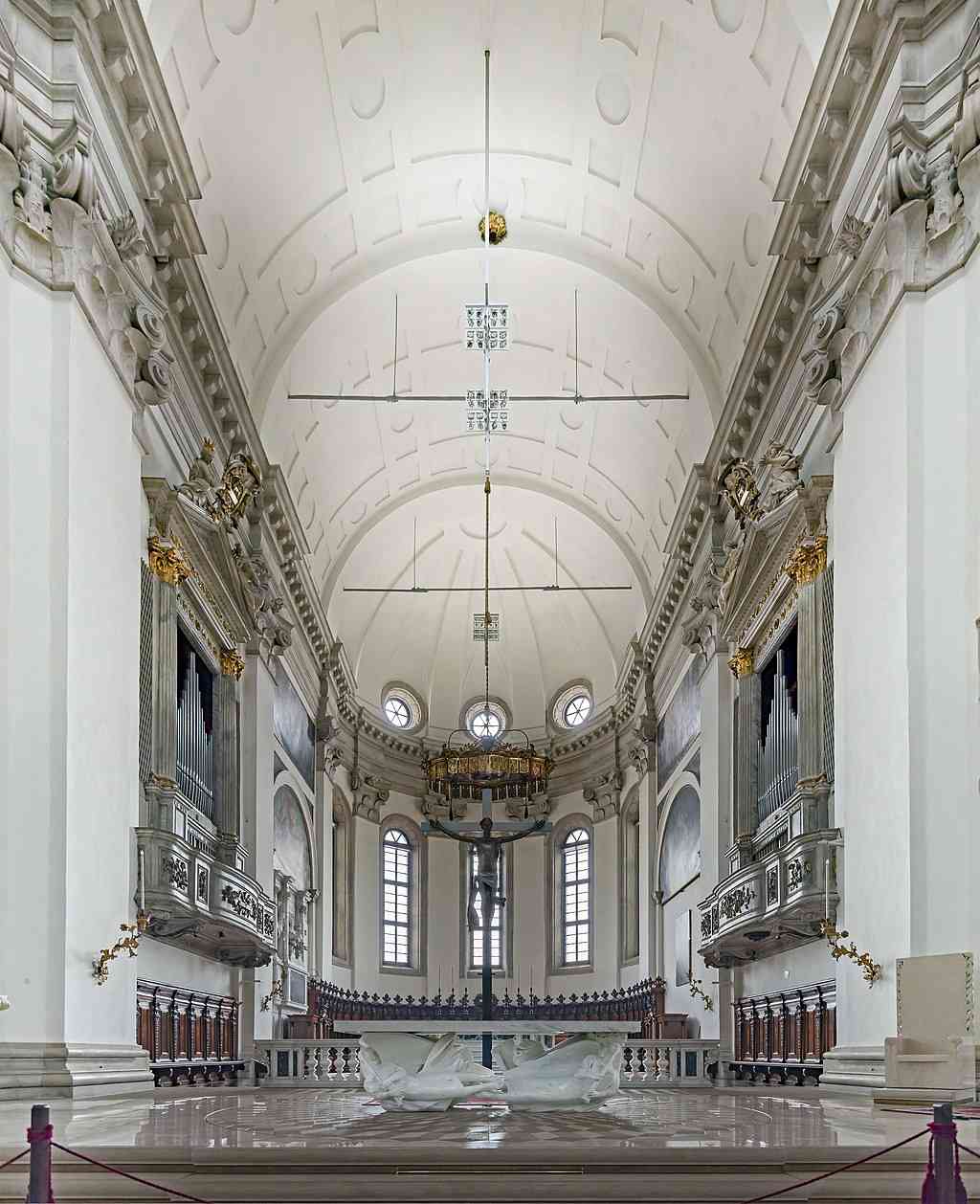The Cathedral of Padua
Piazza Duomo, one of the squares in the heart of Padua, is characterized by the silhouettes of the Cathedral standing between the Episcopal palace and the Baptistery

The first Cathedral of Padua was built in the fourth century and rebuilt several times in the first centuries of its life. In 899, it caught fire during the Hungarian raid. A new construction was completed in 1075 and consecrated by the bishop Olderico. Then a terrible earthquake destroyed it in 1117. In 1180 the new one was consecrated, with an orientation similar to the current one. The bell tower was rebuilt only in 1227.
In the mid-sixteenth century, monumental works began, which lasted two centuries. In 1551 Michelangelo Buonarroti presented a project for the construction of the new chancel of the Cathedral of Padua, a project that was approved and whose realisation was entrusted to famous architect Andrea da Valle. The new chancel was completed in 1582 with substantial changes and inaugurated by Bishop Federico Cornaro. But the work for the rest of the cathedral ended only in 1754, leaving the terracotta facade unfinished.
The interior of the Basilica Cathedral of Saint Mary of the Assumption, large and bright, is a tripartite Latin cross with three naves divided by large pillars. In 1996 the new Presbytery was inaugurated, with decorations by the Tuscan artist Giuliano Vangi. The statues of the four protectors of the city of Padua are depicted on the access steps.
At the side door of the Cathedral is the cenotaph, an honorary sepulchral monument that does not contain the remains of the deceased, of Francesco Petrarca, who was a canon of the Cathedral, a nineteenth-century work by Rinaldo Rinaldi.
The Sacristy of the Canons (a congregation of presbyters close to the bishop) preserves precious works of art, including a Madonna and Child by Giusto de' Menabuoi, two canvases by Giandomenico Tiepolo depicting Saint Philip Neri and St. Gerolamo Emiliani, and a valuable Deposition by Jacopo da Montagnana.
In the left aisle is buried St. Gregorio Barbarigo, bishop of Padua from 1664 to 1697, whose body is exposed, with his face covered by a mask, inside a crystal urn under the altar.
Down in the crypt is the altar of St. Daniel, one of the four patrons of Padua, decorated with bas-reliefs by Tiziano Aspetti.
In the right transept, at the back, the icon on the altar depicting the Madonna and Child is told it belonged to Petrarch, and it is believed that it was painted by Giotto.
The Cathedral’s underground preserves mosaics, remains of columns, and terracotta urns. Some of the objects found here, like Byzantine chapiters with the inscription to the Goddess Fortuna, are now in the Civic Museum at the Eremitani, while others, such as stones and crosses, are in the Diocesan Museum.
Baptistery of the Cathedral
The Baptistery of the Duomo, dedicated to San Giovanni Battista, was built in the Romanesque style in the twelfth century.
The interior was frescoed between 1375 and 1378 by the Florentine painter Giusto de' Menabuoi, commissioned by Fina Buzzaccarini, wife of Francesco I da Carrara. The Florentine artist created his masterpiece here, one of the fourteenth century's most spectacular and best-preserved pictorial cycles.
The Diocesan Museum
The Diocesan Museum is a museum set up in the Bishop's Palace of Padua to preserve and enhance the artistic heritage of the Diocese.
The museum covers an area of over 2,000 square meters, where precious works of painting, sculpture, and goldsmithing, illuminated manuscripts, and sacred vestments are exhibited.
We welcome all contributions, no matter how small. Even a spelling correction is greatly appreciated.
All submissions are reviewed before being published.
Continue to changelog-

© 'Bell Tower' by Didier Descouens is licensed under CC BY-SA 4.0 Attribution copied to clipboard Failed copying attribution to clipboard -

© 'View of the nave' by Didier Descouens is licensed under CC BY-SA 4.0 Attribution copied to clipboard Failed copying attribution to clipboard -

© 'Altar of Gregorio Barbarigo' by Didier Descouens is licensed under CC BY-SA 4.0 Attribution copied to clipboard Failed copying attribution to clipboard -

We welcome all contributions.
All submissions are reviewed before being published.
We welcome all contributions, no matter how small. Even a spelling correction is greatly appreciated.
All submissions are reviewed before being published.
Continue to changelogWe welcome all contributions, no matter how small. Even a spelling correction is greatly appreciated.
All submissions are reviewed before being published.
Continue to changelogWe welcome all contributions, no matter how small. Even a spelling correction is greatly appreciated.
All submissions are reviewed before being published.
Continue to changelogCategory
Cost
-
51 m
The masterwork by Giusto de' Menabuoi, the frescoes are inspired by scenes from the Old and New Testaments, which culminates in the splendid image of Christ in Paradise
-
The Chapel with its frescoes painted by Guariento is a fantastic testimony of the splendor of what used to be the Carrara Palace
-
169 m
One of the beautiful Venetian buildings surrounding the square of Piazza dei Signori is Loggia del Consiglio, an outstanding example of the architecture of the 15th and 16th centuries.
-
Torre dell'Orologio is a medieval clock tower which rises between the Piazza del Capitaniato and Piazza dei Signori, representing one of the symbols of the Carrarese era in Padua.
-
213 m
Piazza dei Signori is an elegant open square surrounded by monumental works, fulfilling the role of the grand living room of Padua.




